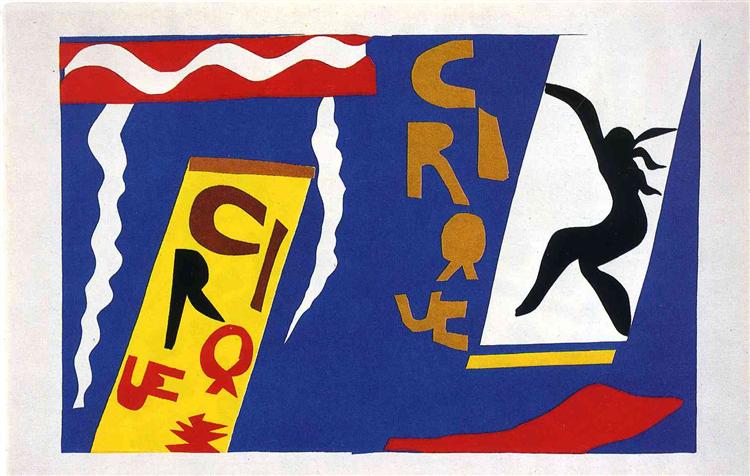Description
The painting "The Circus" (1947) by Henri Matisse is presented as a masterpiece that encapsulates the vibrant and dynamic essence that characterizes many of the works of the renowned French painter. Marked by the bold use of color and simplified forms, this work is a clear testament to Matisse's mature style and his tireless pursuit of beauty and joy in art.
Visually, "The Circus" is a feast for the eyes. The composition is an amalgamation of human figures and abstract elements, organically arranged to convey the energy and dynamism of the circus. The human forms, although stylized and simplified, are immediately recognizable. This simplification is characteristic of Matisse's late style, known as "drawing with scissors," a technique he developed when his health prevented him from painting traditionally. This technique involves cutting shapes from painted paper and assembling them to create vibrant and lively compositions.
The use of color in "The Circus" is notably expressive. Matisse employs a bold and contrasting palette, with a predominance of vivid reds, deep blues, and bright yellows, accented by black and white details. These colors, far from being merely decorative, play a crucial role in creating the circus atmosphere, full of excitement and energy. The juxtaposition of warm and cool colors not only provides visual balance but also evokes the intensity and magic of the spectacle.
In "The Circus," Matisse captures elements that are essential to the circus experience: acrobatics, the elegance of aerial ballet, and the mythical figure of the clown, though in stylized and abstract forms. The human figures seem devoid of specific facial details, giving them a universality that transcends individual barriers. The work, thus, is not just a representation of a circus scene but a celebration of humanity and art itself as a spectacle.
Besides its composition and use of color, "The Circus" stands out for the economy of its forms. Matisse had developed an extraordinary ability to express complex and dynamic emotions through the slightest suggestion of line and shape. The visual economy of this work does not detract from its visual complexity; on the contrary, it invites the viewer to actively participate in constructing the meaning of the work.
Henri Matisse, in his later years, departed from the traditional techniques to which he had been faithful for much of his career. Abandoning brushes for scissors was a radical act that redefined not only his own style but also the possibilities of modern art. Works like "The Circus" are the result of this personal and artistic revolution and demonstrate how Matisse continued to push creative boundaries until the end of his life.
Comparing "The Circus" with other works by Matisse from the same period, it is evident that there is a coherence in his late work marked by a renewed vigor and unrestrained exuberance. paintings like "The Sorrows of the King" and "Odalisque with Magnolias" share a similar joy of living and a splendid use of color and form.
In summary, "The Circus" by Henri Matisse is a work that perfectly encapsulates the artist's ability to combine simplicity and sophistication, creating a composition that is both accessible and deeply exciting. It is a tribute not only to the circus show but also to the artist's own creative process, becoming an essential piece to understand Matisse's genius and his inimitable vision of the world.

